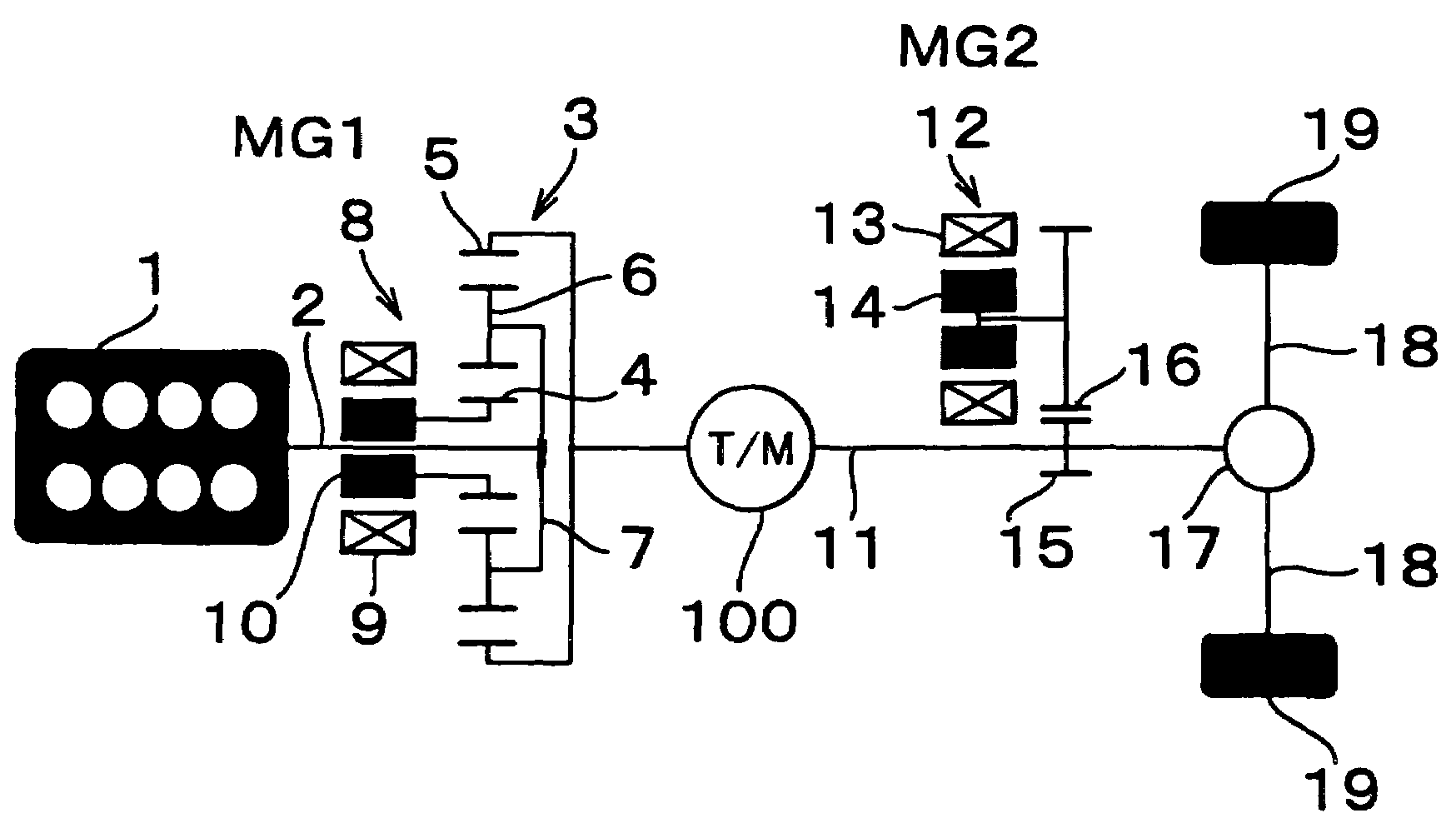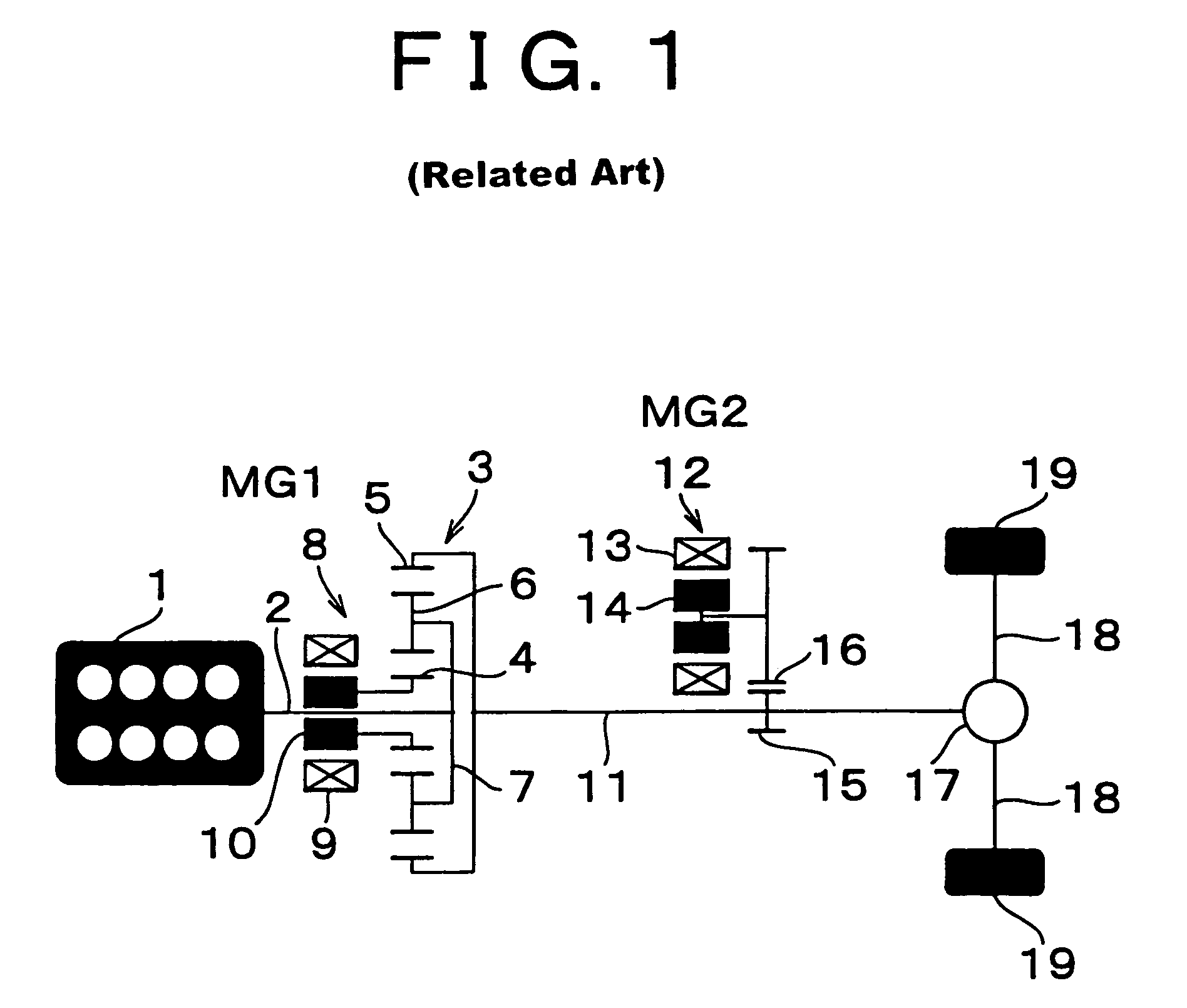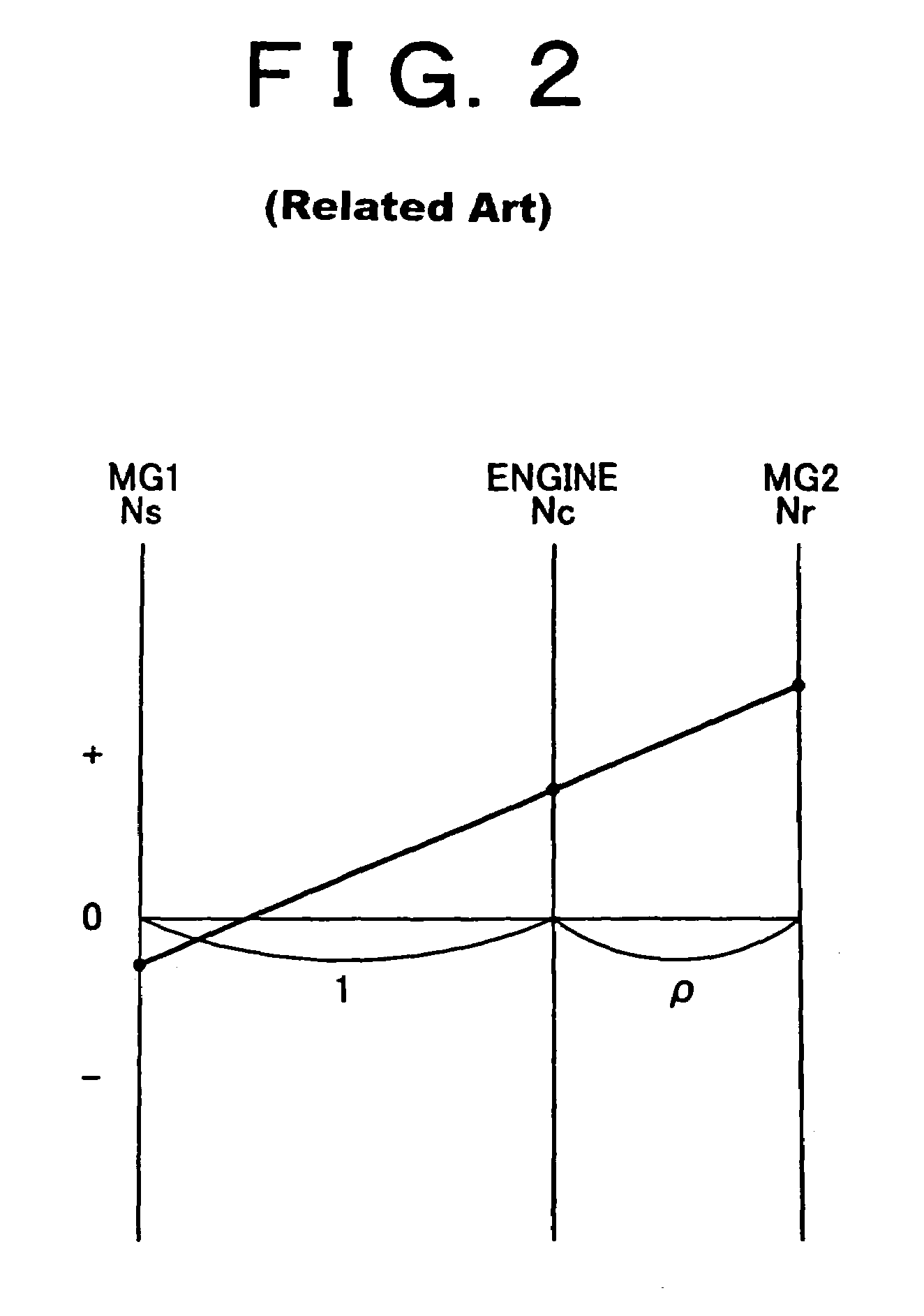Hybrid-vehicle drive system and operation method with a transmission
- Summary
- Abstract
- Description
- Claims
- Application Information
AI Technical Summary
Benefits of technology
Problems solved by technology
Method used
Image
Examples
first embodiment
[0037]In a first embodiment shown in FIG. 4, a transmission 100 is disposed in an intermediate portion of the wheel-drive shaft at one side of a connecting portion of the second electric motor / generator MG2 closer to the internal combustion engine. In other words, the transmission 100 is disposed in a portion of the propeller shaft 11 as one part of the wheel-drive shaft, such that the transmission 100 is located on one side of the gear 15 that provides the connecting portion of the MG2, which side is closer to the internal combustion engine 1. The transmission 100 may have two or three gear ratios or gear positions, and may also have a reverse gear position. Such a transmission can be provided in various manners by using known techniques. An example of a transmission including three forward-drive gear positions and one reverse-drive gear position is schematically shown in FIG. 7.
[0038]In FIG. 7, reference numerals 20, 22, 24 and 26 denote a sun gear, a ring gear, planetary pinions,...
second embodiment
[0040]In a second embodiment as shown in FIG. 5, a transmission 101 is disposed in an intermediate portion of the wheel-drive shaft on one side of the connecting portion of the second electric motor / generator MG2 remote from the internal combustion engine. In other words, the transmission 101 is disposed in a portion of the propeller shaft 11 as one part of the wheel-drive shaft such that the transmission 101 is located on one side of the gear 15 that provides the connecting portion of the MG2, which side is remote from the internal combustion engine with respect to the connecting portion. The transmission 101 may have two or three forward-drive gear positions and may also have a reverse-drive gear position. The transmission 101 may be constructed as shown in FIG. 7.
[0041]When a transmission having three gear positions is used as the transmission 101 in the driven system of the embodiment as shown in FIG. 5, the relationship (or ratio) between the torque to be produced by the intern...
third embodiment
[0042]In a third embodiment shown in FIG. 6, a transmission 102 is disposed in a connecting line or path between the wheel-drive shaft and the second electric motor / generator MG2. In other words, the transmission 102 is disposed in a connecting portion of the MG2 that connects the MG2 with the propeller shaft 11 as a portion of the wheel drive shaft. The transmission 102 may have two or three gear ratios or positions. With the above arrangement, the transmission 102 need not have a reverse-drive gear position since the MG2 can be driven in the reverse direction by switching an electric circuit for the MG2. Nevertheless, the transmission 102 may have a reverse gear position, or may be constructed as shown in FIG. 7.
[0043]When a transmission having three gear positions is used as the transmission 102 in the embodiment shown in FIG. 6, the relationship (or ratio) between the torque to be produced by the internal combustion engine 1 and the torque to be produced by the MG2, when viewed ...
PUM
 Login to View More
Login to View More Abstract
Description
Claims
Application Information
 Login to View More
Login to View More - R&D
- Intellectual Property
- Life Sciences
- Materials
- Tech Scout
- Unparalleled Data Quality
- Higher Quality Content
- 60% Fewer Hallucinations
Browse by: Latest US Patents, China's latest patents, Technical Efficacy Thesaurus, Application Domain, Technology Topic, Popular Technical Reports.
© 2025 PatSnap. All rights reserved.Legal|Privacy policy|Modern Slavery Act Transparency Statement|Sitemap|About US| Contact US: help@patsnap.com



